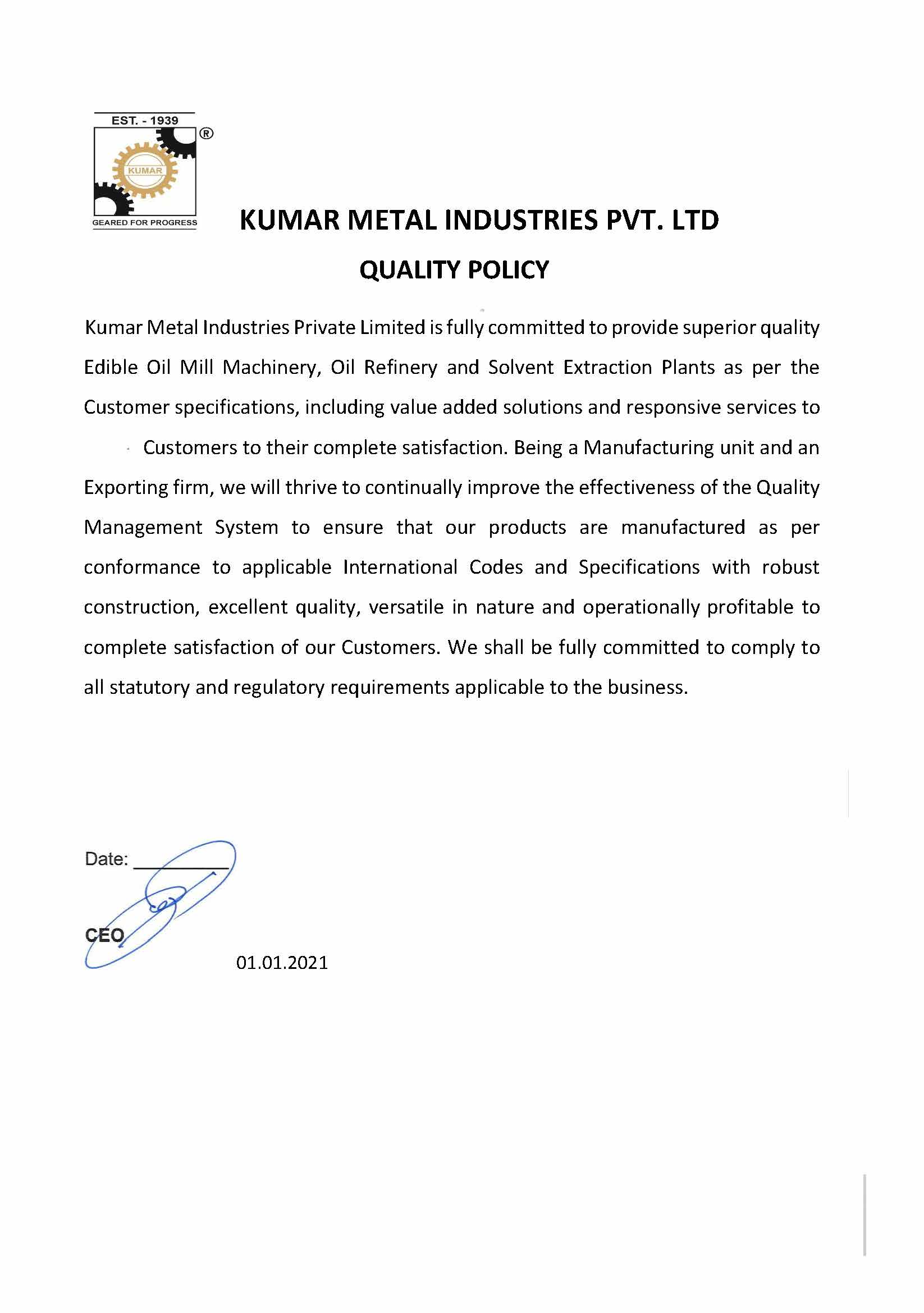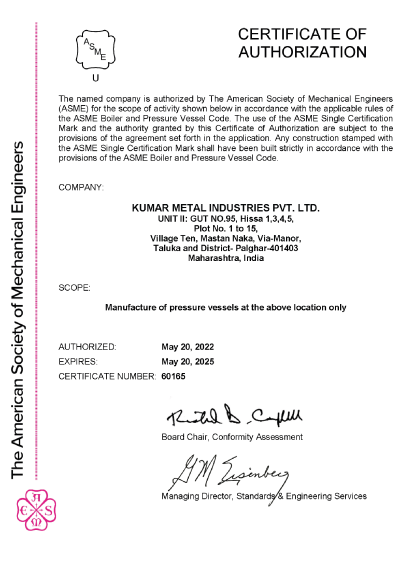
Biodiesel is a mixture of methyl esters of fatty acids produced from vegetable oils such as rapeseed (mustard) oil. It is considered to be the first generation biodiesel or biofuel and meets the European Standard EN14214 for biodiesel.
In recent years, a new variant, other than the sustainable aviation fuel (SAF), has been developed, called as Hydrotreated or Hydrogenated Vegetable Oil (HVO). It is also referred to as Hydro-processed Esters and Fatty Acids (HEFA). This is usually based on advanced raw materials such as residues and waste oils and fats. HVO is a second generation, premium, fossil fuel-free biodiesel meeting the European Standard EN15940 for paraffin fuels.
This article discusses various aspects of Hydrogenated or Hydrotreated Vegetable Oil (HVO).
PRODUCTION
Hydrotreated or hydrogenated vegetable oil (HVO) is also known as HVO100, i.e., pure, unblended HVO. It is produced from renewable raw materials, which do not release any new carbon dioxide (CO2) into the atmosphere.
HVO is produced either from vegetable oils and fats which consist of triglycerides and fatty acids. Some of the examples of these vegetable oils are rapeseed (mustard) oil, sunflower oil, soybean oil, corn oil, palm oil, tall oil. Animal fats like tallow are also used. In addition, various waste products like used cooking oils and greases, fish processing waste, etc. are also used as feedstocks for making HVO. The hydrotreatment manufacturing process is flexible to convert a wide range of low quality waste materials to hydrocarbon-based drop-in fuels.
The vegetable oils and fats used for producing HVO are also used as feedstock to manufacturing biodiesel consisting of fatty acid methyl esters (FAME).
The HVO production process involves hydrogenation or hydrotreatment of vegetable oils and/or animal fats, including the waste cooking oils, tallow and greases, residues from food industry including fish processing, and agriculture. Hydrogen gas is also consumed in the process. The selected raw materials, hydrogen gas and catalyst are mixed together in the hydrotreatment or hydrogenation reactor and processed at high temperatures and pressures.
The chemical conversion of vegetable oils and fats feedstocks to HVO usually takes place in two stages. First the feedstock undergoes hydrotreatment followed by hydrocracking or isomerization. Hydrotreatment is carried out at about 300 to 390 deg. C. Triglyceride feedstocks (and not fatty acids) generate propane (C3H8) as a byproduct.
In this HVO production process, oxygen is removed as water from the triglycerides (oils and fats) or fatty acids feedstocks. The resulting products consist of straight-chain hydrocarbons (paraffins) with varying properties depending on the feedstocks and processing conditions.
These chemical reactions may be represented as follows –
Hydrotreatment of fatty acids –
RCOOH + 2H2 R-H + 2H2O
Hydrotreatment of triglyceride oils and fats –
C3H5(RCOO)3 + 12H2 C3H8 + 3RCH3 + 6H2O
During the process, hydrogen is added to the double bonds of long chain fatty acid molecules first. Then, more hydrogen addition cleaves the triglyceride molecules to fatty acids and removes propane. The hydrogen gas consumed in the process is mainly obtained from fossil or petroleum sources today. These fatty acids are then converted to hydrocarbons by hydrodeoxygenation, i.e., by removing oxygen as water molecule, and / or decarboxylation, i.e., by removing oxygen as carbon dioxide. The resulting hydrocarbons are then converted to the desired quality meeting the end-use criteria, mostly that of the conventional petroleum-based diesel, by isomerization and cracking processes.
The resultant product is a premium quality biofuel with a chemical structure almost identical to regular fossil- or petroleum-based diesel and can therefore replace the regular petroleum-based diesel.
The manufacturing process of HVO is now well-developed and established technology on industrial scale. Generally, higher investment is needed for the HVO manufacturing facilities than the regular biodiesel plants producing mixtures of fatty acid methyl esters.
Hydrotreated or hydrogenated vegetable oil (HVO) can be produced in dedicated production facilities, which generally manufacture 100% HVO. It can also be co-processed with fossil- or petroleum-based oil in petroleum refineries. Bio-based feeds of typically 5 to 10% are blended with petroleum-based feeds in co-processing. Higher ratios of bio-based materials are also used in these blends by some producers. The bio-based components are fractionated in different refinery lines in co-processing, and they end up as multiple products. The HVO manufacturing processes can also be modified to produce renewable kerosene, for example, for the jet fuel applications.
One major advantage of this HVO manufacturing process is the elimination of methanol or methyl alcohol in the process, as the process does not produce methyl esters of fatty acids. Using hydrogen gas instead of methanol is considered as more environmentally friendly, sustainable attribute of HVO.
HVO manufacturing process does not produce glycerine as a byproduct, as triglyerides are not converted to methyl (or other alkyl) esters.
APPLICATIONS AND STANDARDS
Pure or blended hydrotreated or hydrogenated vegetable oil (HVO) or HVO100 can be used in diesel engines of buses, trucks, construction machinery, etc. without any modification. HVO is frequently mixed with regular petroleum-based diesel. HVO is approved for all heavy vehicles produced by the leading automobile manufacturers like Scania, Volvo, Mecedes Benz, etc. HVO can be handled in the existing transport infrastructure without any modifications. HVO is considered a high quality petroleum-based diesel substitute and is therefore referred to as renewable diesel.
HVO is a paraffinic diesel fuel and specified in the standard EN15940:2016, which covers HVO and Fischer-Tropsch GTL (gas-to-liquid) fuel products containing up to 7% vol/vol of fatty acid methyl esters (FAME). High blending ratios of HVO met the diesel fuel standards, such as EN590 and ASTM D975. HVO meets the EN590 standards for diesel fuels, except for the density, which is about 7% lower. The standards of regular biodiesel are not applicable to HVO. All hydrotreated vegetable oils (HVO) must fulfil the sustainability criteria defined by the EU Renewable Energy Directive (RED).
Hydrotreated vegetable oil (HVO) has also been approved for use as an aviation (biojet) fuel, based on the standard ASTM D7566-14. The updated version of this standard allows up to 50% bio-based components including HVO to be added to conventional jet or aviation fuel. Thus, HVO, which can be upgraded to sustainable aviation fuel (SAF), has become an important alternative for producing renewable or sustainable aviation fuels (SAF).
Typical properties of HVO are listed in the following table along with those of petroleum-based diesel. Median values are used for simplification.
TABLE 1: TYPICAL PROPERTIES OF HYDROTREATED VEGETABLE OIL (HVO) AND PETROLEUM-BASED DIESEL
| PROPERTIES | HVO | DIESEL |
| Density at 20 deg. C (kg/lit) | 0.78 | 0.83 |
| Lower heating value, (MJ/kg) | 44.4 | 43.1 |
| Cetane number | >80 | 50 |
| Fuel equivalence | 0.97 | 1 |
| GHG (g CO2 eq / MJ) | 11.5 (Waste cooking oil HVO), 50 (Palm oil HVO) | 88.7 |
[Source – ETIP Bioenergy]
PERFORMANCE
Hydrotreated or hydrogenated vegetable oil (HVO) has chemical properties similar to those of petroleum-based or fossil-based diesel. However, there are some differences – HVO has lower density and energy content than petroleum-based diesel. Hydrotreated vegetable oil is free from sulfur, oxygen and aromatic hydrocarbons, and has high cetane number.
HVO has better combustion, filterability and cold temperature resistance than other diesel products on the market.
Cetane number of HVO diesel is between 70 and 90, which is significantly higher than fossil- or petroleum-based diesel, whose cetane number is about 50 to 60. HVO provides additional power to the diesel engines. It is more efficient and cleaner combustion which reduces soot in the engines and exhaust systems.
HVO has been claimed to offer superior cold weather performance of the diesel engines, even up to -30 deg. C. Many HVO products available on the market are odorless.
Using HVO as a fuel can reduce carbon dioxide (CO2) and greenhouse gas (GHG) emissions by up to 90%, as compared to conventional petroleum-based diesel.
As compared to the fatty acid methyl esters biodiesel, combustion of HVO in diesel engines usually results in lower NOx emissions and reduced issues of flow properties (i.e., poor cold properties), storage instability and aging of the fuel. HVO is renewable paraffin fuel with combustion properties similar to other renewable paraffins such as Fischer-Tropsch liquids, which are produced by biomass gasification and chemical synthesis.
COMMERCIAL ASPECTS
Hydrotreated or hydrogenated vegetable oil (HVO) has been produced for more than a decade. The first HVO production facility in Europe was established by Neste in 2007. Tall oil – based HVO was introduced in Sweden in 2011. Several petroleum refineries in Europe have been modified to treat HVO instead of fossil oil feedstocks.
The global production of HVO reached about 14.2 billion litres in 2019. The HVO output in the European Union reached 2.8 billion litres in 2018, and is expected to reach 4.5 billion litres in the year 2020. Today, palm oil is the largest feedstock used for producing HVO, globally.
Several HVO production plants have been commissioned in Europe during the past few years and some more are being opened in the near future. Selected projects and their production capacities are listed in the following table.
TABLE 1: SELECTED HVO PROJECTS IN EUROPE AND THEIR CAPACITIES (‘000 TPA)
| COMPANY | PLANT LOCATION | PRODUCTION CAPACITY, ‘000 TPA | COMPLETION DATE |
| TotalEnergies | La Mede, France | 500000 | Opened July 2019 |
| ENI | Gela, Italy | 750000 | Opened August 2019 |
| ENI | Porto Marghera, Italy | 240000 | 2021 |
| UPM | Kotka, Finland | 500000 | Final decision pending |
| St1 | Gothenburg, Sweden | 100000 | 2022 |
| Preem | Lysekil and Gothenburg, Sweden | 1200000 | Increasing to 1.3 million TPA by 2023 |
| PKN Orlen | Plock, Poland and Litvinov, Czech Republic | Not disclosed | Not disclosed |
[Source – ICIS]
Apart from the companies listed in the above table, the following companies are also leading players in the HVO production – Neste, AltAir Fuels, Renewable Energy Group, SkyNRG, Statoil, ConocoPhillips, Petrobras.
The use and demand for HVO has been increasing in the past several years, especially in Europe, where the diesel engines dominate the automotive market. The accelerating HVO consumption has been projected to trigger the downfall of traditional biodiesel in the next few years. Today, HVO is the second largest renewable diesel alternative globally and is blended in petroleum-based diesel being sold as mixtures at retail fuel filling stations.
Commonly produced fatty acid methyl ester biodiesel in Europe is rapeseed (mustard) oil methyl ester (RME), while palm oil methyl ester (PME) and soybean oil methyl ester (SME) are also consumed in significant quantities, especially in summer season.
The declining use of FAME biodiesel in Europe and in the world is expected to reduce the output of glycerine byproduct, thus affecting its supply. Therefore, customers of glycerine will need to use glycerine produced during the production of fatty acids, leading to re-balancing of the oleochemicals market.
You might find these interesting:
Learn everything about sustainable aviation fuel (SAF) biodiesel
Discover the raw materials and manufacturing process of Biodiesels
Learn how you can turn waste into profit with Kumar's biodiesel manufacturing plant
If you would like to know more about adding biodiesel manufacturing capacity to your existing facility, please reach out to us using the form below.
"*" indicates required fields




















Interested to setup Hvo Plant in India,We are existing Biodiesel plant having 350 TPD capacity.
Interested to setup a biodiesel plant of 100TPD